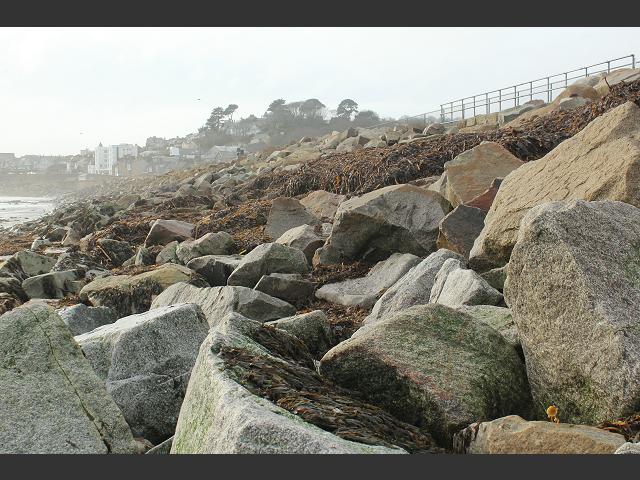
APHOTOMARINE
An educational resource dedicated mainly to the photography
and diversity of marine life that can be found in coastal waters
and intertidal areas of Great Britain and Ireland by David Fenwick.

Seaweed - Cast and Clearance (Marine environmental)
Scroll down and rollover titles to change screen image or click on title to view image.
Seaweed / Marine Algae
Cast ashore after autumn storm
- on Penzance sea defences 1
Cast ashore after autumn storm
- on Penzance sea defences 1
Seaweed / Marine Algae
Cast ashore after autumn storm
- on Penzance sea defences 2
Seaweed / Marine Algae
Cast ashore after autumn storm
- on Penzance sea defences 3
Seaweed / Marine Algae
Cast ashore after autumn storm
- on Penzance sea defences 4
Seaweed / Marine Algae
Cast ashore after autumn storm
- on Penzance sea defences 5
Seaweed / Marine Algae
Cast ashore after autumn storm
- weed bank 1
Seaweed / Marine Algae
Cast ashore after autumn storm
- weed bank 2
Images above taken of seaweed, mainly kelp, washed up on the granite block sea defences at Chyandour, Penzance, Cornwall, after southerly gales. 18.11.11.
Seaweed / Marine Algae
In line on strandline after storm
- kelp stipes 1
Seaweed / Marine Algae
In line on strandline after storm
- kelp stipes 2
Seaweed / Marine Algae
In line on strandline after storm
- kelp stipes 3
Images above of kelp stipes washed-up on strandline near Marazion, Cornwall; after storm event. 16.03.14.
Seaweed / Marine Algae
Removal during holiday season
- Par Beach 1
Seaweed / Marine Algae
Removal during holiday season
- Par Beach 2
The above images were taken of seaweed removal at Par Beach, Par, near St. Austell, Cornwall; 23.07.09; prior to the peak weekends of the holiday season.
Tips on Seaweed Collection -
On public beaches you generally do not have to have permission to collect seaweed, unless collection is planned on an industrial scale. For the latter, the local authority must be contacted.
On private beaches you must contact the landowner and gain permission to collect.
Only collect seaweed that has washed onto the beach, collection of live seaweed can damage marine habitats.
Only choose seaweed that has recently been washed-up that looks and smells fresh. Old seaweed can breakdown and give off the rotten egg or stink bomb smelling gas hydrogen sulphide, which is dangerous to man and animals.
Ideally fork the seaweed into bags and don't have any physical contact with the weed itself; and wear thick gloves. Seaweed that is cast ashore can contain sharp objects, which including hypodermic needles / syringes, glass bottles, splintered or nailed timber and sharp shell fragments.
Over application can lead to the ground becoming too salty; this can lead to stunted growth, even plant death. Generally speaking though seaweed is one of the finest and cheapest ways of fertilising and improving the soil.

The main objective of this website is in furthering environmental awareness and education through the medium of photography. To increase awareness and access to the wildlife of the region and help
people find and identify it. Sometimes the difference between species is obvious but many species can only be determined by observing microscopic characteristics that are specific to any one species.